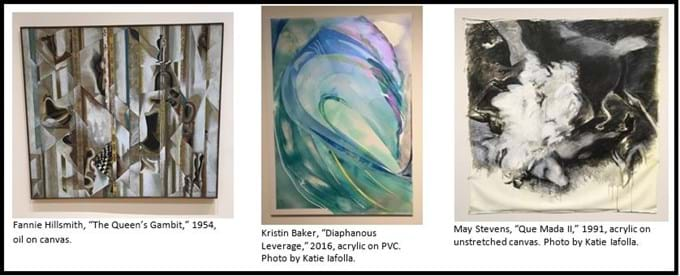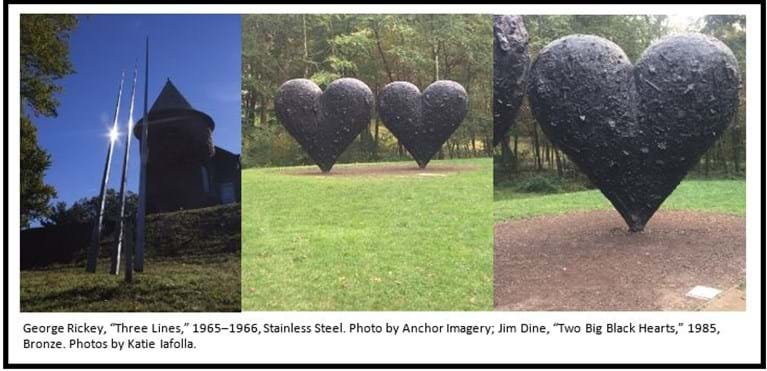
Finding Our Story Through Art
This month, WE’s Boston office took a break from client work and emails to go on a field trip to deCordova Sculpture Park and Museum in Lincoln, Massachusetts. Field trips are run through WE’s Learning and Development program and are a great way for employees to “step into a new environment to learn from unexpected experiences. Get out of your comfort zone, gain new perspectives, spark creativity, and find inspiration.”

Our goal for this trip was twofold: enjoy some bonding time as a small office and learn new ways to tell a story.
Established in 1950, deCordova Sculpture Park and Museum is the largest park of its kind in New England. It provides a constantly changing landscape of large-scale, outdoor, modern and contemporary sculpture and site-specific installations. Inside, the museum features exhibitions and innovative interpretive programming.
For the first leg of our tour, our guide Nicolette took us through the museum. The exhibit currently on display was full of pieces by female artists throughout history ranging from the 1950s to present day.
The first piece we looked at was called “The Queen’s Gambit.” Painted by Fannie Hillsmith in 1951, this painting was intricate. We all found different objects in the piece, and during our discussion of the painting our guide said, “It’s interesting that we can all look at the same artwork, but we all see the piece differently. Our knowledge background influences our perspective.”
This was something that stuck with me as I thought about how going to a museum will help us reflect on our job as storytellers. The way WE tells a story is influenced by our educational backgrounds and personal experiences. The story only improves as more people review it because the piece becomes a compilation of our various perspectives in a single story.

Another piece we looked at was called “Diaphanous Leverage” by Kristin Baker. This painting was interesting because one side was contained by a thick, white border, while the other side was unbound by a border, making it seem like the painting could leap off the canvas. Our guide compared this to another piece called “Que Mada II” by May Stevens. This piece was clearly unfinished due to its lack of color and frame. Nicolette said this was a deliberate choice made by the artist because of the emotions behind the art. She felt that the piece was unfinished, thus she did not want it to be restricted by borders or a frame.
The juxtaposition of these two pieces made me think about how we frame a story. Do we confine it within strict white borders or can we leave it open and up to interpretation? Granted, a lot depends on the client and how they want their story told, but it is something to keep in mind while developing a narrative.
As we ventured into the Sculpture Park, what struck me the most was the simplicity of the names of the sculptures, specifically “Three Lines” by George Rickey and “Two Big Black Hearts” by Jim Dine.
These sculptures were exactly what they claimed to be, yet when you got closer they became much more complex.
“Three Lines” was a set of three needle-like, tapered lines. It operated on a set of weights and fulcrums, so each individual line slowly and discreetly moved depending on how the wind shifted.
“Two Big Black Hearts” looked unassuming from far away, but as soon as you were close enough you could see that Dine had incorporated casts of various objects, including his own hands, faces and tools into the surface of the hearts. All these objects held an important significance to Dine, thus showing us that the real story is in the small details you only notice when looking closely.

As we think about these sculptures in relation to telling a story, it becomes clear that we need to do the same thing only in reverse. Our job is to take complex ideas, full of technical phrases that only someone with a medical or engineering degree would understand, and simplify them for a consumer audience.
The field trip to deCordova was a welcome and refreshing change of scenery for the WE Boston team. We left feeling ready to tackle all the emails that filled our inboxes during the day and encouraged to look at our work differently. A day away from the office can morph perspective — go find your story!
Connect with the author, Katie Iafolla, on Twitter and LinkedIn.

